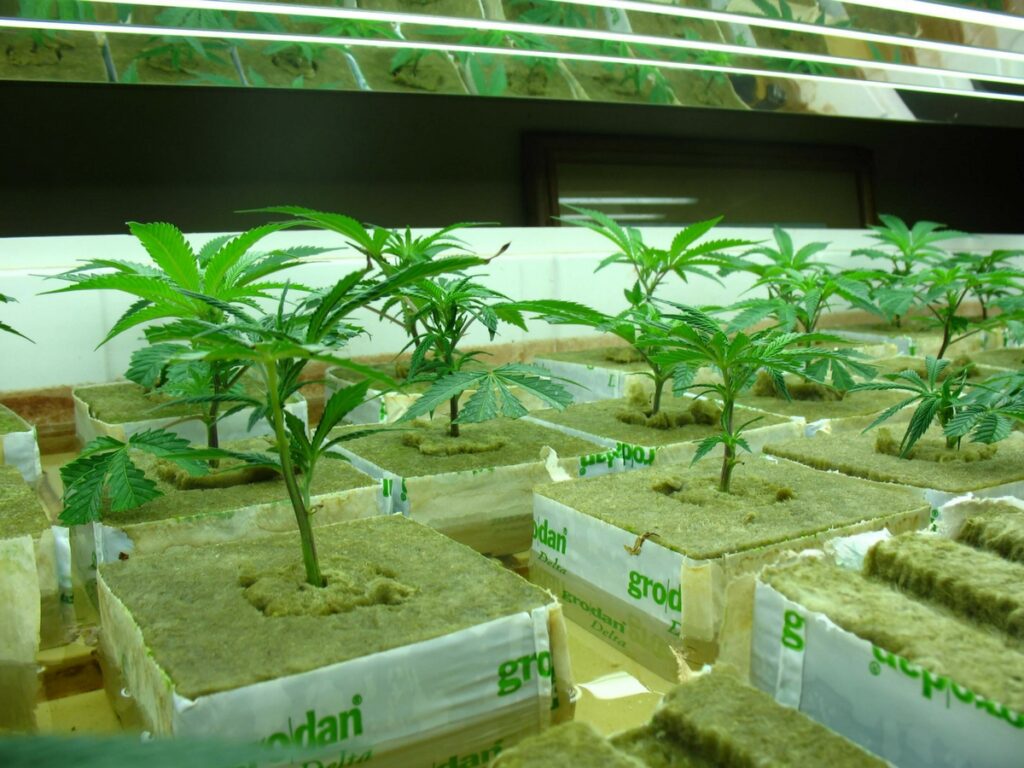
The generative phase
After one week at maximum, we will shorten the illumination time, and adapt the irrigation schedule accordingly. We keep giving water 6 times per light cycle. Give water and fertilizer during the period that the light is on, and not during the dark period. In the flowering, or generative phase, the plants are in the light for 12 hours, and in darkness for 12 hours. We imitate a shortening of the day in autumn; a sign for the plant to start flowering and forming seeds during its last phase of life. In the generative phase, the plant’s emphasis is less on growth. Less chlorophyll is produced and in the flowering phase, we often see fewer fingers forming on the cannabis leaf. The plant needs less blue light during the flowering phase (that was important for chlorophyll production in the leaves), and it needs more red light. The autumn sun produces more red light, because the autumn sun is lower in the sky.That doesn’t mean that you must now use only the sodium lamps. With only red light, the plants lose their vegetative leaves (they turn yellow and fall off easily), while the stem of the plant is lengthened. The distance between the branches (also called the ‘internode’) increases. When we just let the mercury-iodide lamps supply the plants with blue light, this effect won’t occur so easily. The supply of water and nutrients continues. The time between irrigations is shortened, so that the plants are still irrigated during each light cycle. Not in order to push the plants to grow as fast as possible, but to keep the metabolism at level, and to produce resins. The female plants will show their first flowers after a week or two. The following period lasts at least 60 days, depending on the variety. With some of the plants, the blooming period lasts up to 90 days. It’s worth the trouble to be patient for the full flowering period before you start harvesting. Harvesting during that time stresses the plants, which can ultimately cause a decreased yield.

